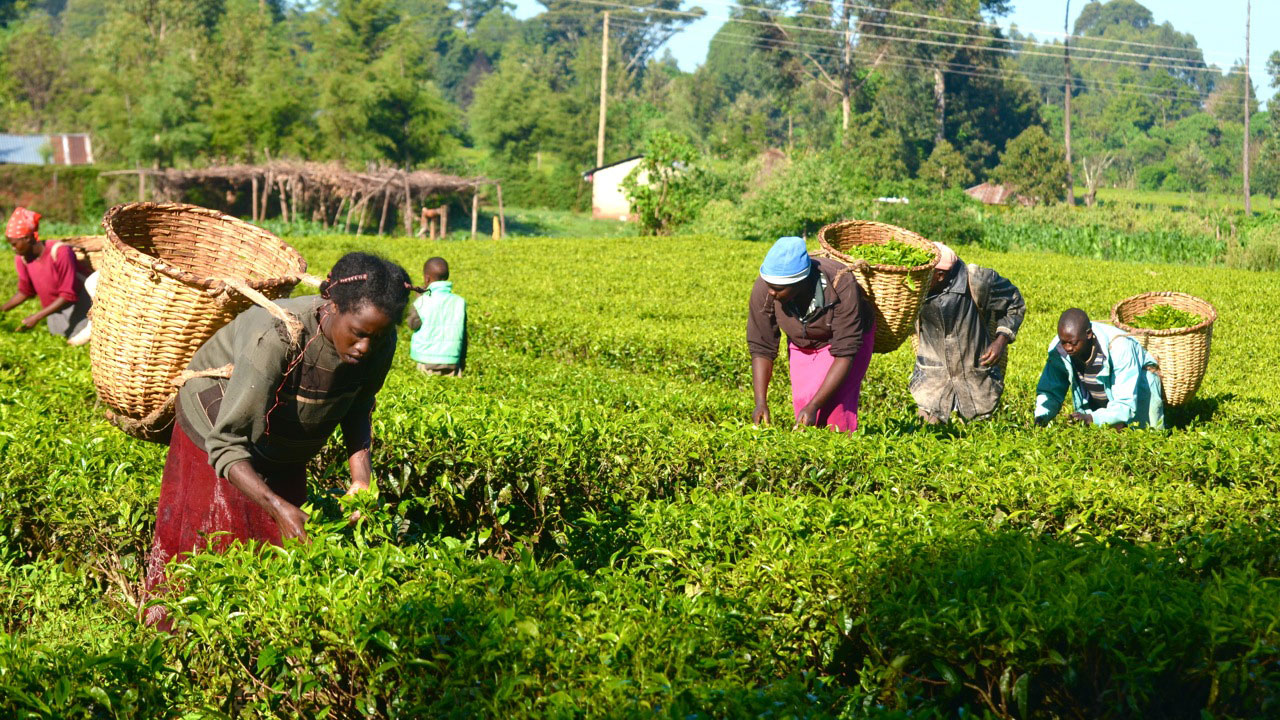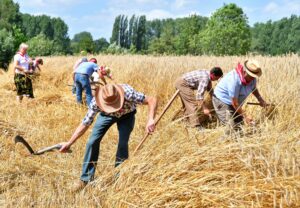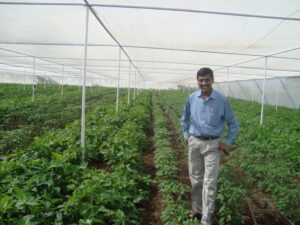Step into a world where lush green fields meet the boundless blue sky, where the symphony of buzzing insects and chirping birds harmonize with the gentle breeze. Here, the earth’s bountiful treasures are cultivated using sustainable practices, breathing new life into our fragile planet. Welcome to the realm of farming for the future, a captivating adventure that holds the key to a greener world. In this article, we will uncover the secrets of mastering sustainable practices that pave the way to a brighter future for generations to come. So, unplug from the hustle and bustle of modern life, and join us as we embark on an enlightening journey through the sustainable farming landscape!
Farming for the Future: Master Sustainable Practices for a Greener World!
As we strive to build a greener world, sustainable farming practices are becoming increasingly crucial. Embracing sustainable agriculture not only benefits the environment but also ensures the long-term viability of our food systems. Today, we will explore some innovative practices that farmers can adopt to contribute to a more sustainable future.
1. Crop Rotation and Cover Crops
One key sustainable farming practice is implementing crop rotation and cover crops in agricultural systems. By diversifying the types of crops grown in a particular field or plot, farmers can reduce the risk of soil erosion, improve soil fertility, and help control pests and diseases naturally. Intercropping with cover crops like legumes can also enhance nitrogen fixation, reducing the dependence on synthetic fertilizers.
2. Precision Agriculture with Smart Technology
In an era driven by technology, precision agriculture offers farmers an opportunity to optimize their operations while minimizing environmental impact. By harnessing the power of smart technology, such as GPS and sensors, farmers can effectively monitor soil moisture levels, nutrient content, and even detect early signs of plant stress. This data-driven approach empowers farmers to make informed decisions, reducing water and fertilizer usage, optimizing yields, and reducing pollution.
3. Agroforestry for Ecological Balance
Agroforestry is an innovative farming practice that combines the intentional planting of trees with traditional agriculture. By integrating trees into their farms, farmers can create a diverse and harmonious ecosystem that offers numerous benefits. Trees act as windbreaks, reducing soil erosion, while providing shade for crops, reducing water usage. Additionally, agroforestry enhances biodiversity, creates habitats for beneficial insects, and sequesters significant amounts of carbon dioxide, mitigating climate change.
Benefit
Example
Improved Soil Quality
Incorporating organic matter like compost
Enhanced Water Conservation
Using drip irrigation systems
Pest Control
Introducing predatory insects
These are just a few examples of the vast array of sustainable farming practices that can help us achieve a greener and more sustainable future. By taking proactive steps towards sustainable agriculture, farmers can play a pivotal role in preserving our planet for future generations to come.
Farming for the Future: Master Sustainable Practices for a Greener World!
As we strive to build a greener world, sustainable farming practices are becoming increasingly crucial. Embracing sustainable agriculture not only benefits the environment but also ensures the long-term viability of our food systems. Today, we will explore some innovative practices that farmers can adopt to contribute to a more sustainable future.
1. Crop Rotation and Cover Crops
One key sustainable farming practice is implementing crop rotation and cover crops in agricultural systems. By diversifying the types of crops grown in a particular field or plot, farmers can reduce the risk of soil erosion, improve soil fertility, and help control pests and diseases naturally. Intercropping with cover crops like legumes can also enhance nitrogen fixation, reducing the dependence on synthetic fertilizers.
2. Precision Agriculture with Smart Technology
In an era driven by technology, precision agriculture offers farmers an opportunity to optimize their operations while minimizing environmental impact. By harnessing the power of smart technology, such as GPS and sensors, farmers can effectively monitor soil moisture levels, nutrient content, and even detect early signs of plant stress. This data-driven approach empowers farmers to make informed decisions, reducing water and fertilizer usage, optimizing yields, and reducing pollution.
3. Agroforestry for Ecological Balance
Agroforestry is an innovative farming practice that combines the intentional planting of trees with traditional agriculture. By integrating trees into their farms, farmers can create a diverse and harmonious ecosystem that offers numerous benefits. Trees act as windbreaks, reducing soil erosion, while providing shade for crops, reducing water usage. Additionally, agroforestry enhances biodiversity, creates habitats for beneficial insects, and sequesters significant amounts of carbon dioxide, mitigating climate change.
| Benefit | Example |
|---|---|
| Improved Soil Quality | Incorporating organic matter like compost |
| Enhanced Water Conservation | Using drip irrigation systems |
| Pest Control | Introducing predatory insects |
These are just a few examples of the vast array of sustainable farming practices that can help us achieve a greener and more sustainable future. By taking proactive steps towards sustainable agriculture, farmers can play a pivotal role in preserving our planet for future generations to come.
Over the years, %%video_title%% has become a true icon in the world of entertainment. With its captivating storyline, mesmerizing visuals, and stellar performances, this film has managed to leave an indelible mark on audiences worldwide.
Welcome to our latest post, “Farming for the Future: Master Sustainable Practices for a Greener World!” In this article, we will explore the importance of sustainable farming practices and how they can contribute to a more environmentally friendly world. Let’s delve into the world of sustainable farming and discover the innovative methods that can help create a greener future for generations to come.
In today’s fast-paced world, it is crucial to prioritize sustainable practices in every aspect of our lives, including agriculture. Sustainable farming not only helps preserve the environment but also ensures the long-term availability of natural resources and promotes healthier food production. From organic farming techniques to crop rotation and efficient water management, there are numerous strategies that farmers can adopt to minimize their ecological footprint.
One of the key elements of sustainable farming is the use of organic fertilizers and pesticides. By avoiding harmful chemicals, farmers can protect the soil’s fertility and prevent water contamination. Moreover, sustainable farming techniques promote biodiversity by encouraging the growth of beneficial insects and plant species. This healthy ecosystem helps maintain a natural balance in the environment, reducing the need for synthetic pesticides.
One of the standout aspects of %%video_title%% is its remarkable cinematography. The film seamlessly blends breathtaking landscapes with intricate set designs, creating a visually stunning experience for viewers. From the serene beauty of nature to the bustling streets of a vibrant city, every frame of this movie is a work of art.
One of the standout aspects of %%video_title%% is its remarkable cinematography. The film seamlessly blends breathtaking landscapes with intricate set designs, creating a visually stunning experience for viewers. From the serene beauty of nature to the bustling streets of a vibrant city, every frame of this movie is a work of art.
As we immerse ourselves in the captivating world of %%video_title%%, the cinematography transports us to different locations, each with its own unique charm. The film captures the grandeur of majestic mountains, vast oceans, and dense forests, inviting us to appreciate the wonders of nature. Additionally, the attention to detail in the set designs creates an immersive experience, whether it’s a quaint cottage or a bustling market square. The cinematographers have truly brought the vision of the film to life with their masterful use of camera angles, lighting, and composition.
The beauty of %%video_title%% lies not only in its stunning visuals but also in the emotions it evokes. The cinematography enhances the storytelling, allowing us to feel the characters’ joy, sorrow, and excitement. Every frame is carefully crafted to elicit a specific mood or reaction, immersing us further into the narrative. Whether it’s a sweeping aerial shot or a close-up of a character’s expression, the cinematography captivates our senses and enhances our understanding of the story.
The gripping narrative of %%video_title%% is another aspect that has won the hearts of many. The plot intricately weaves together various subplots, keeping viewers engaged from start to finish. With unexpected twists and turns, thought-provoking themes, and well-developed characters, this film offers a thought-provoking and immersive storytelling experience.
The gripping narrative of “%%video_title%%” is just one reason why this film stands out from the rest. It takes viewers on a rollercoaster ride of emotions, leaving them with a sense of awe and satisfaction. The plot, with its intricate weaving of various subplots, keeps audiences engaged from start to finish. Each twist and turn in the story is unexpected, leaving viewers on the edge of their seats, eager to find out what happens next.
But this film isn’t just about entertainment. It also touches on thought-provoking themes that make us question our own beliefs and values. Through its compelling storytelling, it raises important questions about our society, the choices we make, and the consequences of those choices. The characters are well-developed and relatable, allowing viewers to connect with their journey on a deeper level. From the protagonist’s struggles to the antagonist’s motives, every character adds layers of complexity to the story.
As you immerse yourself in the world of “%%video_title%%,” you’ll come to realize that this film is more than just a captivating story. It is a reflection of our society and a call to action. Through its compelling narrative, it sheds light on the urgency of addressing pressing issues and encourages viewers to consider how they can contribute to a greener, more sustainable future. With each scene, you’ll be inspired to think about the choices you make and how they impact the world around you.



